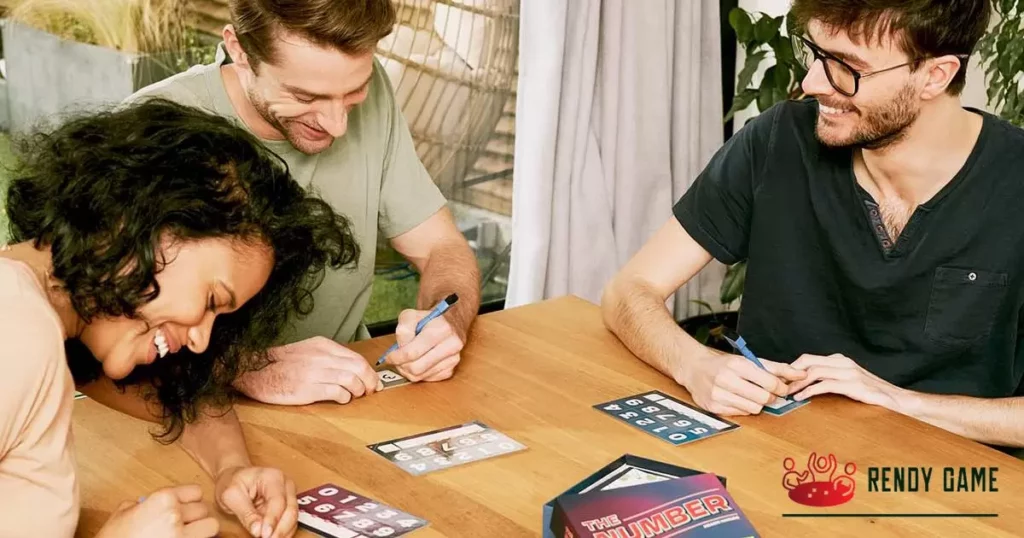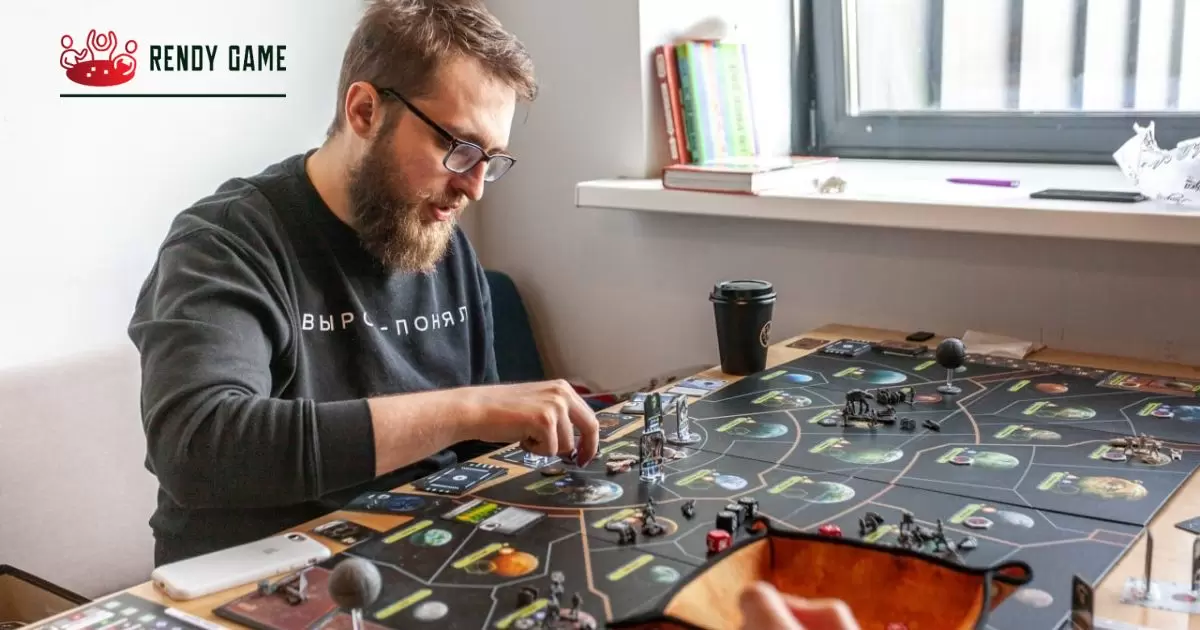A board game designer is someone who creates and develops games played on boards, involving rules, pieces, and strategic challenges. They imagine, design, and refine the gameplay, mechanics, and aesthetics of the game. Board game designers bring stories and concepts to life by crafting engaging and entertaining experiences for players of all ages.
Ever wondered how to become a board game designer? It’s not just about playing games it’s about crafting worlds, rules, and challenges that captivate players. Designing board games involves a mix of creativity, problem solving, and a deep understanding of what makes games fun and engaging.
Becoming a board game designer requires a passion for gaming and a willingness to explore diverse themes and mechanics. It involves honing your creative skills, understanding player psychology, and learning about game mechanics and prototyping. Networking with other designers and gaining practical experience through playtesting and iterating your designs are key steps toward success in this exciting field.
Skills and Traits of a Successful Board Game Designer
Becoming a board game designer involves a blend of innate skills and cultivated traits. Creativity reigns supreme, the ability to conjure captivating worlds and engaging mechanics is key. Beyond creativity, a knack for problem solving proves invaluable, tackling the puzzles of game flow and player engagement.
Attention to detail is crucial, it’s about refining rules and mechanics until they’re polished gems. A deep love for games themselves is the foundation, coupled with a curiosity to explore various genres and mechanics. Adaptability is essential, as designs often evolve through multiple iterations.
The Creative Process as a Board Game Designer
As a board game designer, diving into the creative process is like exploring a boundless universe of ideas and possibilities. It starts with a spark, an imaginative concept or a thrilling theme that ignites your passion. Sketching initial ideas on paper allows the vision to take shape.
This is where your creativity blooms, where worlds are built and rules begin to form. From envisioning the game’s objectives to mapping out player interactions, each step fuels the excitement of creation.Once the foundational ideas are set, the creative journey deepens into refining gameplay mechanics.
Navigating Challenges Faced by Board Game Designers
Creating board games isn’t just about inventing fun, it’s about overcoming hurdles too. One major challenge is finding the perfect balance between complexity and simplicity. Striking this balance ensures that your game is engaging without overwhelming players with intricate rules.
Maintaining originality while drawing inspiration from existing games poses another obstacle. Being innovative while respecting established mechanics requires careful navigation.
Another hurdle for board game designers is managing playtesting feedback.
Essential Steps for Aspiring Board Game Designers

Starting as a board game designer involves understanding the foundational steps. Begin by immersing yourself in various games across genres to comprehend diverse mechanics. Next, grasp the core elements of game design theory, such as rules, balance, and player engagement.
Iterating on your designs through playtesting is paramount. Observing how players interact with your game aids in identifying its strengths and weaknesses. Studying successful board games and dissecting their mechanics offers invaluable insights.
Prototyping and Playtesting
Creating prototypes and playtesting are pivotal stages in board game design. Prototyping involves bringing your initial concept to life, creating a basic version of your game. This stage allows you to visualize the mechanics, rules, and overall gameplay. It doesn’t need to be perfect, the goal is to have something tangible to test.
Playtesting is where the magic happens. You gather people to play your prototype, observe their reactions, and note what works and what doesn’t. This phase helps refine rules, mechanics, and balance while uncovering potential flaws or areas needing improvement. Repeated playtesting with different groups provides diverse perspectives.
The Importance of Iteration in Perfecting Board Game Designs
Iteration is the heart of refining a board game design. It involves the process of revising, adjusting, and improving the game based on feedback from playtests. Each iteration cycle brings enhancements, whether small tweaks to rules or significant changes to game mechanics.
Embracing iteration allows you to evolve the game from a raw idea into a polished and engaging experience. Through iterations, you address issues discovered during playtesting, gradually molding the game into its best form.
This cyclical process fosters continuous improvement, ensuring that every aspect of the game aligns with the intended player experience. Iteration isn’t just about fixing flaws, it’s about enhancing what works and striving for a more captivating gameplay experience.
Tools and Resources in Board Game Design
In the world of board game design, technology acts as a trusty sidekick, empowering designers with tools and resources to bring their visions to life. Software like Tabletop Simulator or Tabletopia enables creators to simulate game experiences virtually, facilitating playtesting and iteration with ease.
These platforms provide a sandbox for refining mechanics and testing gameplay dynamics, allowing designers to finetune their creations before the physical prototyping stage. Graphic design software such as Adobe Creative Suite or Canva proves invaluable for crafting visually appealing prototypes and refining game components with professional polish.
Balancing Creativity and Practicality in Board Game Design
Finding the sweet spot between boundless creativity and practical functionality is the tightrope that board game designers skillfully tread. At the outset, a surge of creativity often fuels the conceptualization phase, allowing designers to dream up innovative mechanics and captivating themes.
As the design evolves, the need for practicality becomes apparent. Designers must ensure that their creative ideas translate into a coherent and playable game. This demands a delicate dance of refining imaginative concepts into manageable rules and components without losing the spark that makes the game unique.
Networking and Collaborating in the Board Game Design Community
Connecting with fellow designers is crucial for growth. Joining forums, attending conventions, and engaging in online communities like BoardGameGeek allows you to share experiences and learn from others. Collaborating on projects fosters new ideas and perspectives.
Participating in local game nights or design meetups can lead to valuable connections and potential partnerships. Being active in the community not only expands your network but also keeps you updated on industry trends and opportunities.
Tips for Presenting and Pitching Your Board Game Ideas
Crafting a compelling pitch is essential. Start with a clear and concise explanation of your game’s concept and what makes it unique. Show your passion and belief in your idea. Use visuals and prototypes to make your presentation engaging and tangible.
Practice your pitch to ensure clarity and confidence when presenting to publishers or potential collaborators. Research the preferences and priorities of the publishers or investors you’re pitching to. Tailor your presentation to highlight how your game aligns with their interests.
Dos and Don’ts for Presenting and Pitching Your Board Game Ideas
| Dos | Don’ts |
| Clearly articulate your game’s unique aspects | Don’t overwhelm with unnecessary details |
| Tailor your pitch to your specific audience | Avoid being too vague or generic |
| Use visuals to enhance and illustrate ideas | Don’t neglect to practice your presentation extensively |
| Showcase market potential and target audience | Avoid being defensive be open to constructive feedback |
| Develop a concise and compelling elevator pitch | Don’t forget to research and tailor your pitch to publishers |
Sustaining a Career as a Board Game Designer Growth and Adaptability
Embrace continuous learning, including understanding the cost to publish a board game. The industry evolves, and so should your skills. Stay updated on emerging trends, mechanics, and technologies in board game design. Seek feedback and critiques to improve your craft. Adaptability is key to thriving in this field.
Diversify your portfolio. Don’t limit yourself to one type of game. Experiment with different themes, mechanics, and target audiences. This versatility not only showcases your range as a designer but also increases your chances of success in a competitive market.
FAQs
What makes a board game idea stand out?
Innovation, engaging mechanics, and a unique theme that captivates players set a board game idea apart from the rest.
How do I protect my board game idea from being stolen?
Consider copyrighting or trademarking your game, and maintain detailed records of its development to establish ownership.
Is prior experience necessary to become a board game designer?
While prior experience can be beneficial, passion, creativity, and dedication to learning the craft are crucial for aspiring board game designers.
How important is playtesting in board game design?
Playtesting is essential, it helps refine mechanics, identify flaws, and ensures the game is enjoyable and balanced for players.
Conclusion
Becoming a board game designer is a journey fueled by creativity, perseverance, and a love for gaming. It’s about turning ideas into tangible, interactive experiences that bring joy to players around the table.
Through dedication and continuous learning, aspiring designers can craft unique games that resonate with audiences, each design a reflection of their passion and commitment to the craft. In this dynamic field, success often stems from embracing challenges, refining designs through iteration, and connecting with a vibrant community of fellow designers.

